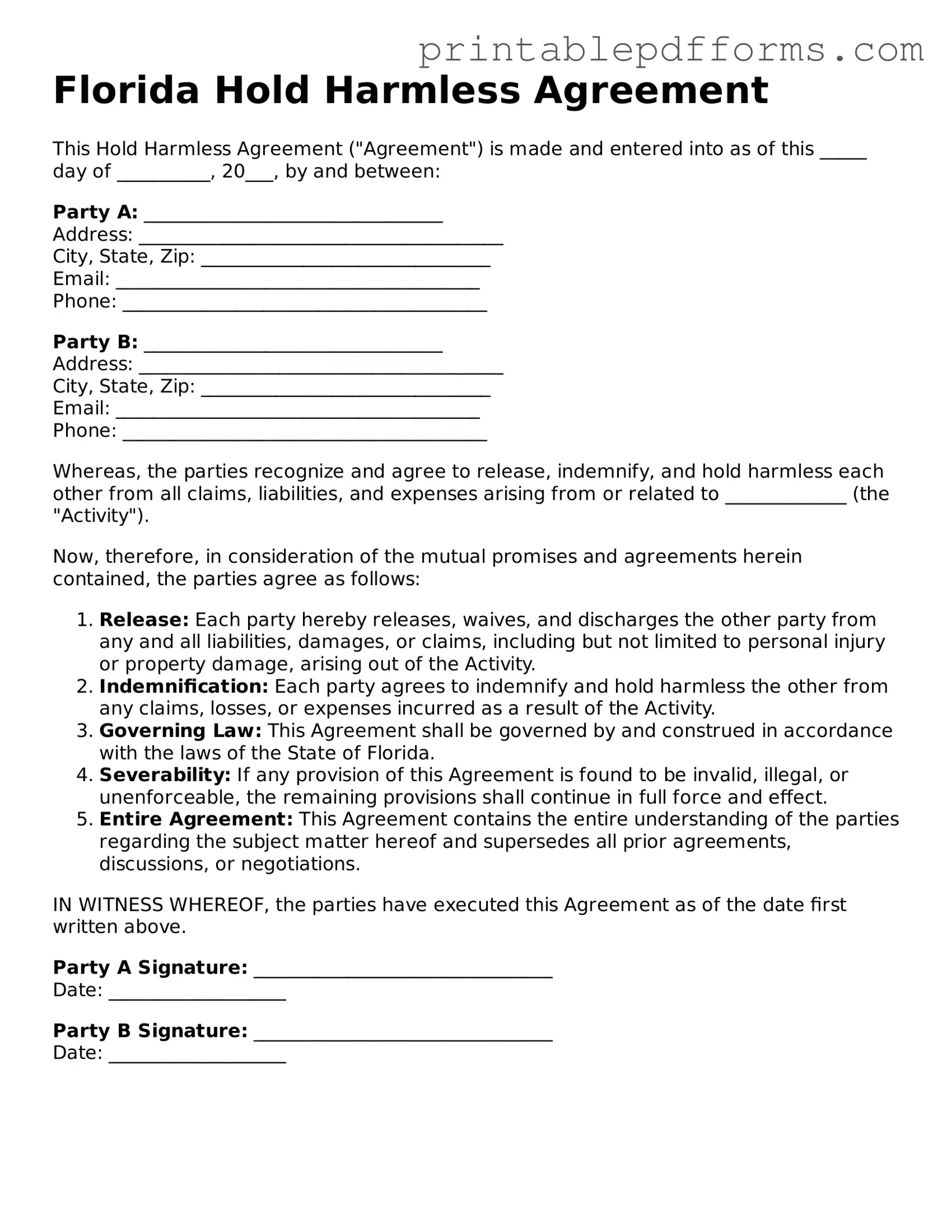Florida Hold Harmless Agreement
This Hold Harmless Agreement ("Agreement") is made and entered into as of this _____ day of __________, 20___, by and between:
Party A: ________________________________
Address: _______________________________________
City, State, Zip: _______________________________
Email: _______________________________________
Phone: _______________________________________
Party B: ________________________________
Address: _______________________________________
City, State, Zip: _______________________________
Email: _______________________________________
Phone: _______________________________________
Whereas, the parties recognize and agree to release, indemnify, and hold harmless each other from all claims, liabilities, and expenses arising from or related to _____________ (the "Activity").
Now, therefore, in consideration of the mutual promises and agreements herein contained, the parties agree as follows:
- Release: Each party hereby releases, waives, and discharges the other party from any and all liabilities, damages, or claims, including but not limited to personal injury or property damage, arising out of the Activity.
- Indemnification: Each party agrees to indemnify and hold harmless the other from any claims, losses, or expenses incurred as a result of the Activity.
- Governing Law: This Agreement shall be governed by and construed in accordance with the laws of the State of Florida.
- Severability: If any provision of this Agreement is found to be invalid, illegal, or unenforceable, the remaining provisions shall continue in full force and effect.
- Entire Agreement: This Agreement contains the entire understanding of the parties regarding the subject matter hereof and supersedes all prior agreements, discussions, or negotiations.
IN WITNESS WHEREOF, the parties have executed this Agreement as of the date first written above.
Party A Signature: ________________________________
Date: ___________________
Party B Signature: ________________________________
Date: ___________________
